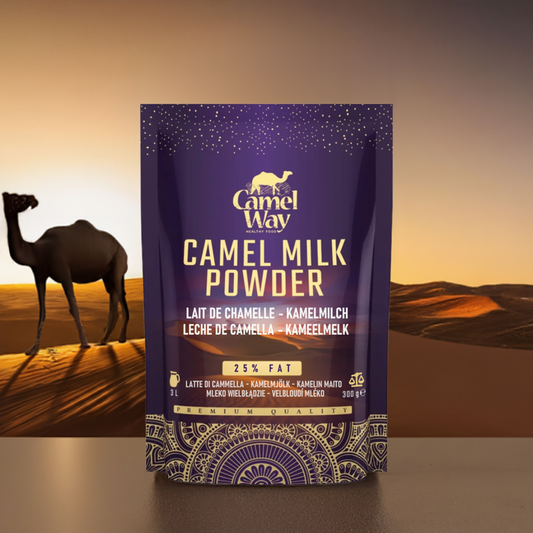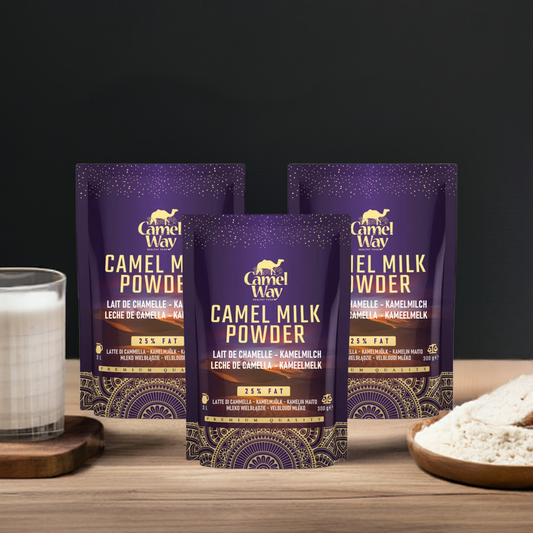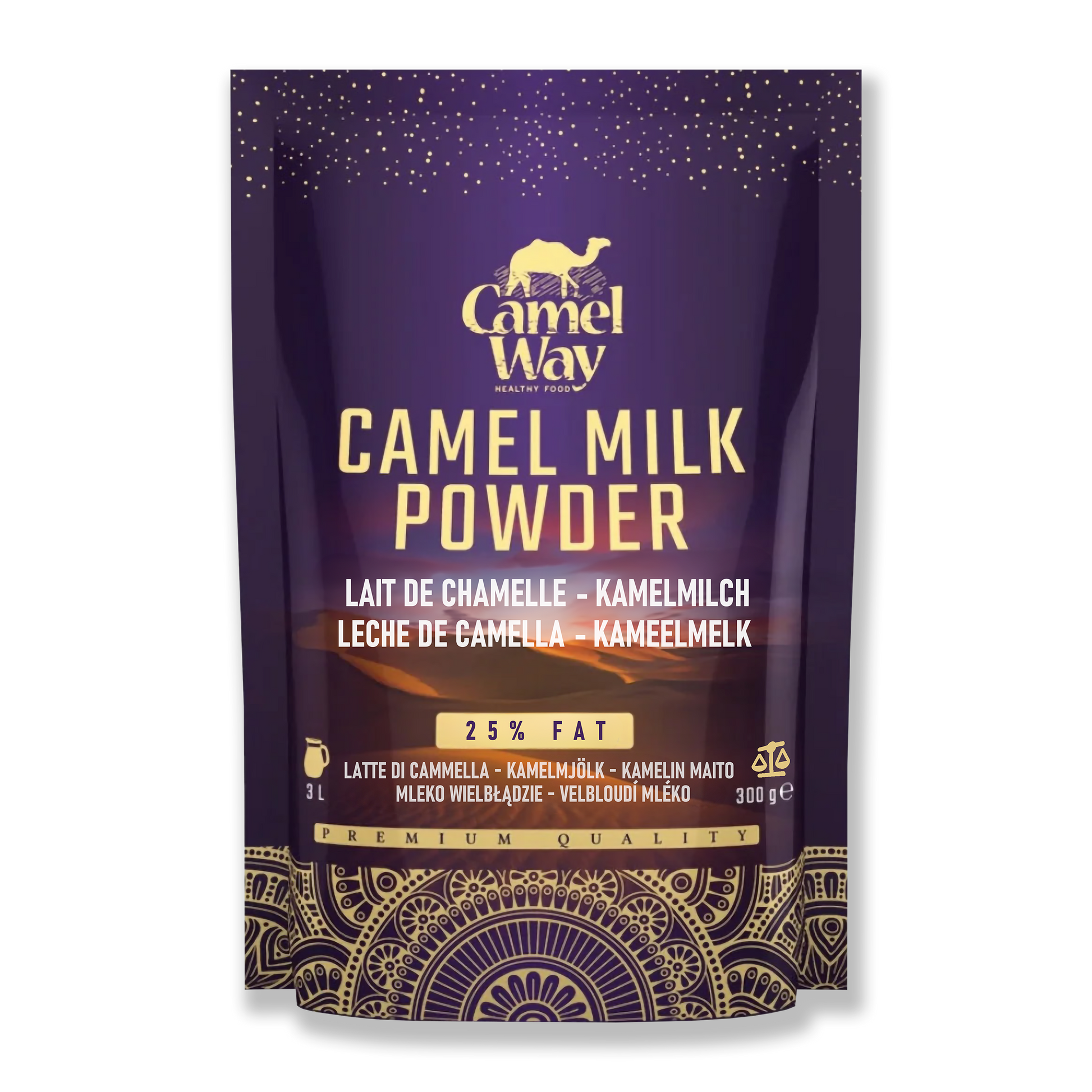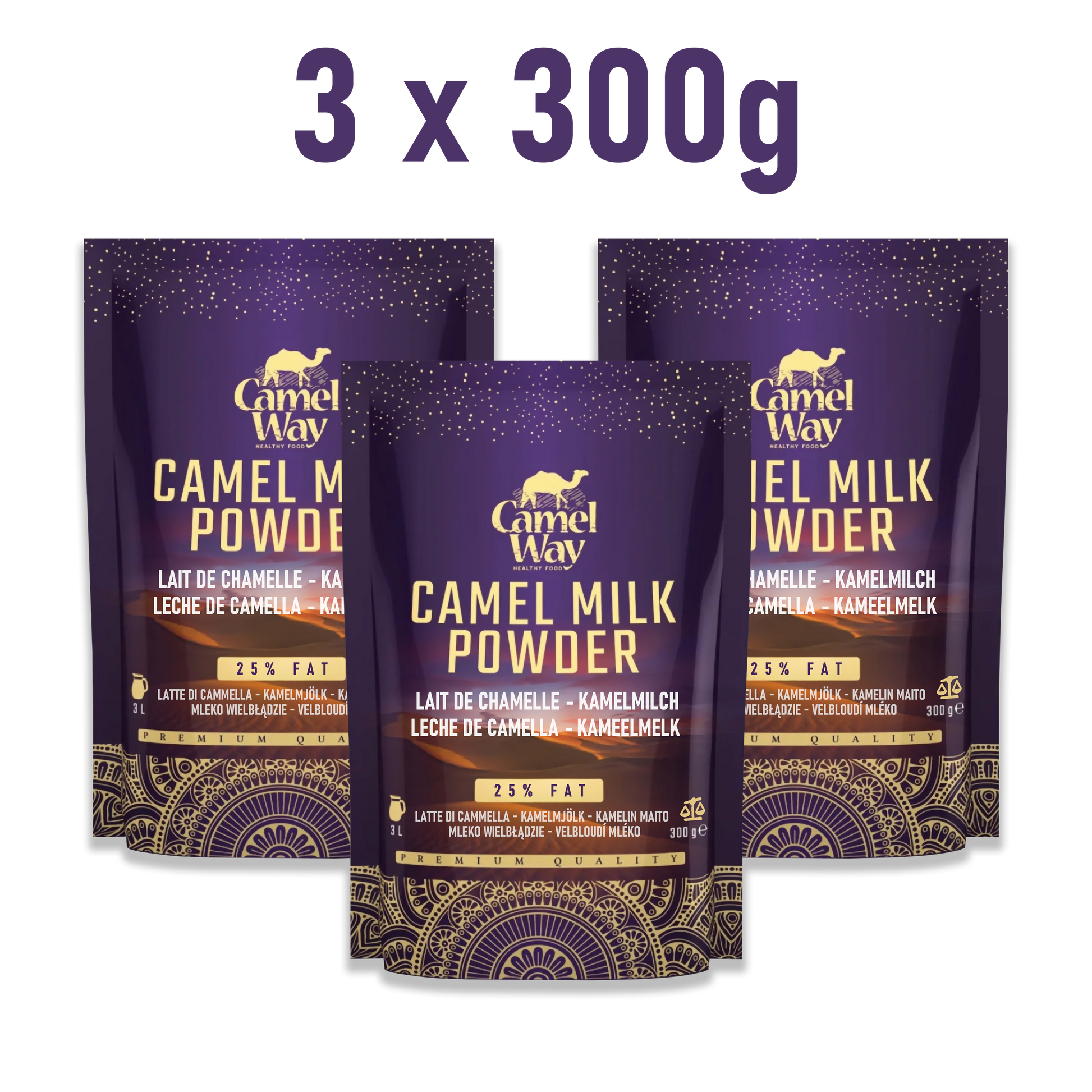
Camel milk and diabetes - evidence
Camel milk is being studied as a complementary nutrition strategy for diabetes. Multiple randomized trials and systematic reviews report better glycemic control in Type 1 diabetes and supportive effects in Type 2 - with improvements in insulin need, HbA1c, and lipid profile in some studies. This page summarizes the evidence behind these findings and explains how to use EU-certified camel milk powder from CamelWay with confidence.

Camel milk and diabetes
At CamelWay we take a research-first approach. This page distills our 2025 report - Camel Milk and Diabetes: Science-Backed Benefits for Type 1 and Type 2 Patients - published on Zenodo under DOI 10.5281/zenodo.17184240.
It synthesizes randomized trials and systematic reviews indexed on PubMed: in Type 1 diabetes, adjunct camel milk has been shown to improve fasting glucose and HbA1c while lowering daily insulin needs; in Type 2, early RCTs and meta-analyses point to better glycemic control and favorable lipid changes. Below, we translate the evidence into clear, practical guidance for thoughtful, routine use.

What the science says
- Type 1 diabetes: In randomized trials, adding camel milk to standard insulin therapy improved fasting glucose and HbA1c, and reduced daily insulin dose for many participants. Some long-term data show sustained benefits. PubMed
- Type 2 diabetes: Early trials and meta-analyses suggest lower fasting glucose, better post-meal control, improved insulin sensitivity markers, and a healthier lipid profile - especially with longer use. PubMed
- How it may work: Insulin-like proteins, support for pancreatic function, GLP-1 and microbiome effects, and anti-inflammatory and antioxidant bioactives. PMC
Our Camel Milk Products - Buy Camel Milk
-
Camel Milk Powder 300g | Pure & Nutritious
Regular price €54,95Regular priceUnit price / per€69,95Sale price €54,95Sale -
Camel Milk Powder 3x300g (Total 900g) | Family Bulk Pack
Regular price €149,95Regular priceUnit price / per€164,95Sale price €149,95Sale -
Handmade Camel Milk Chocolate | 44% Cocoa
Regular price €8,95Regular priceUnit price / per€12,95Sale price €8,95Sale -
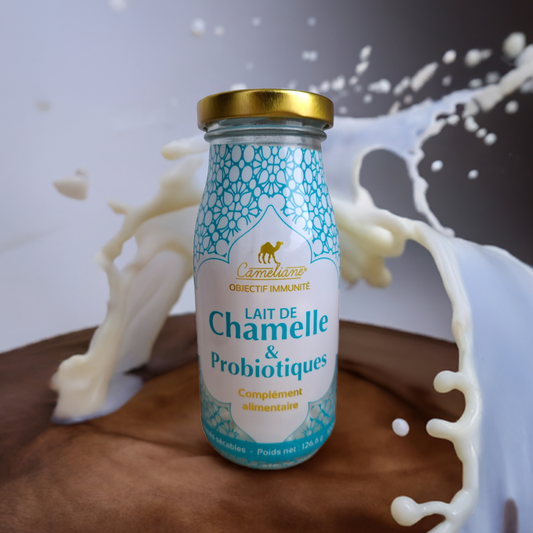 Sold out
Sold outCamel Milk Probiotics | 42 Lozenges
Regular price €29,95Regular priceUnit price / per€39,95Sale price €29,95Sold out

What clinical studies show
Type 1 diabetes - adjunct to insulin
- 16-week randomized trial in young adults: adding ~500 ml/day camel milk to standard care led to markedly lower fasting glucose and HbA1c versus control. PubMed
- 2-year randomized trial: patients on camel milk plus insulin reduced daily insulin dose significantly compared with controls, with better long-term glycemic control and acceptability. PubMed
- 1-year randomized trial: improved control and reduced insulin requirement maintained over 12 months. PubMed
What this means: For T1D, camel milk is not a replacement for insulin - but trials report better control and less injected insulin when used alongside standard therapy. Discuss any dose changes with your diabetologist. PubMed

Type 2 diabetes - glycemia, insulin sensitivity, lipids
- Double-blind RCT (4 weeks) with camel milk powder: significant drop in fasting glucose and improved 2-hour post-meal levels versus cow-milk powder; GLP-1 and beneficial gut taxa increased. PubMed
- Systematic review and meta-analysis (2023): in people with diabetes, camel milk was associated with reductions in total cholesterol, LDL and triglycerides, and higher HDL - effects were stronger with use beyond 6 months and more pronounced in T1D, but favorable trends were also seen in T2D. BioMed Central
What this means: For T2D, the signal is supportive - better fasting and post-prandial control in short-term trials and improved lipid markers with longer use. Lifestyle and prescribed medication remain the foundation. PubMed
CamelWay
Camel Milk Powder 300g | Pure & Nutritious
Share
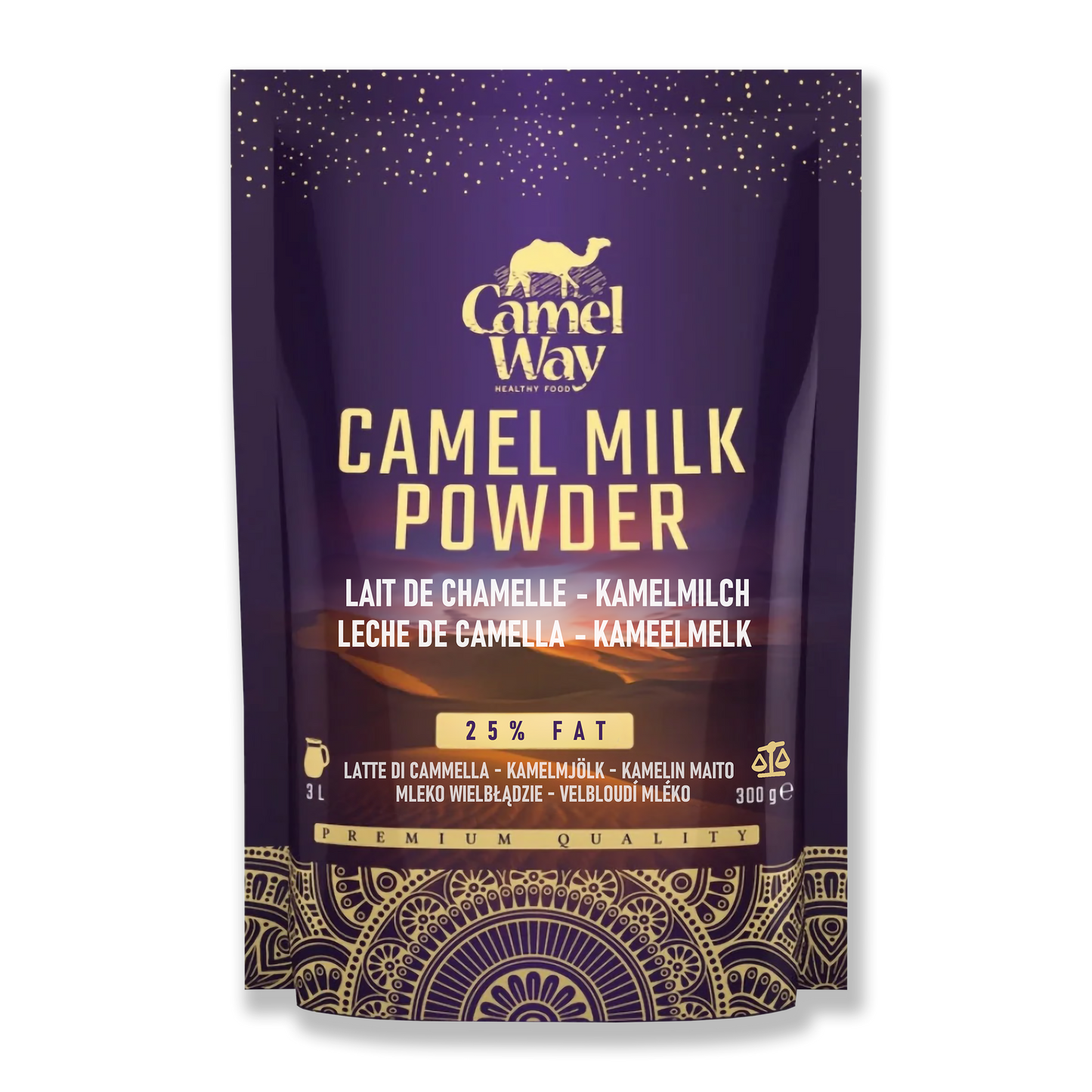
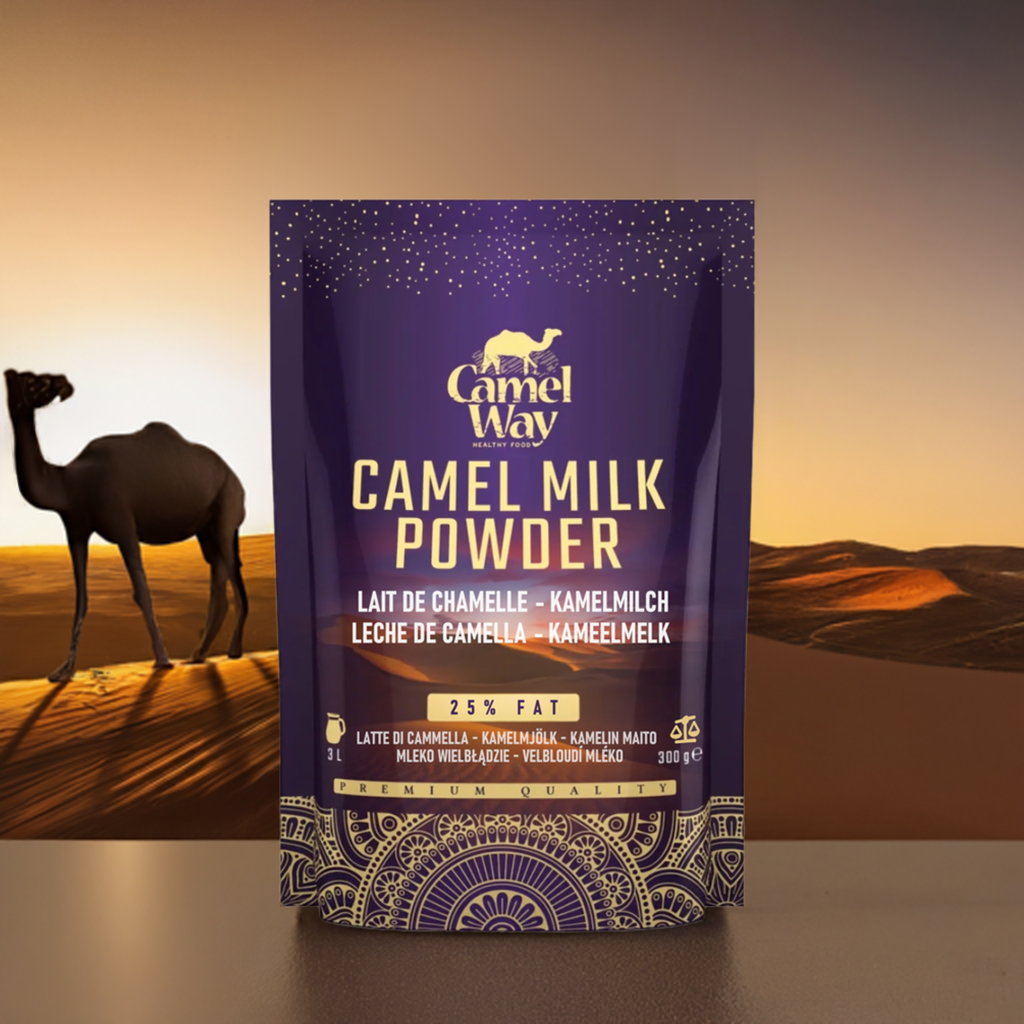
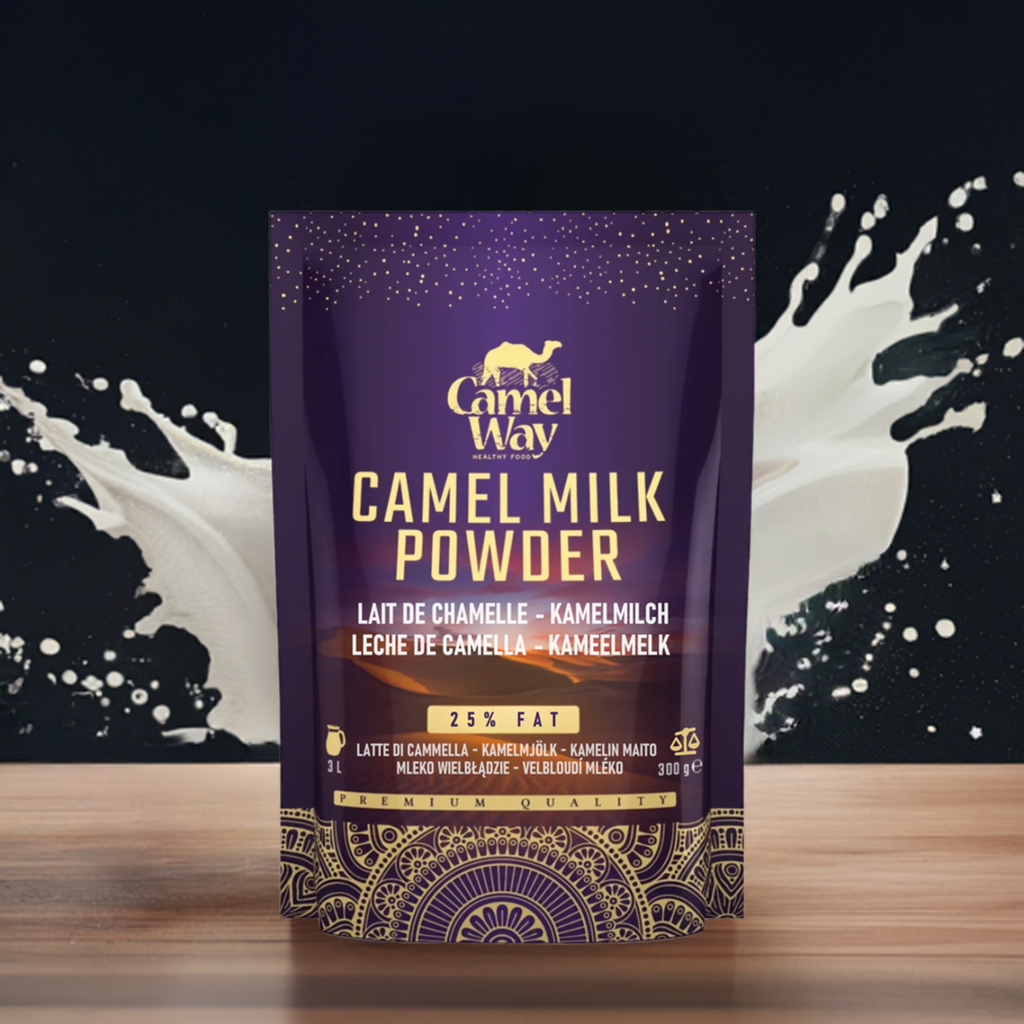
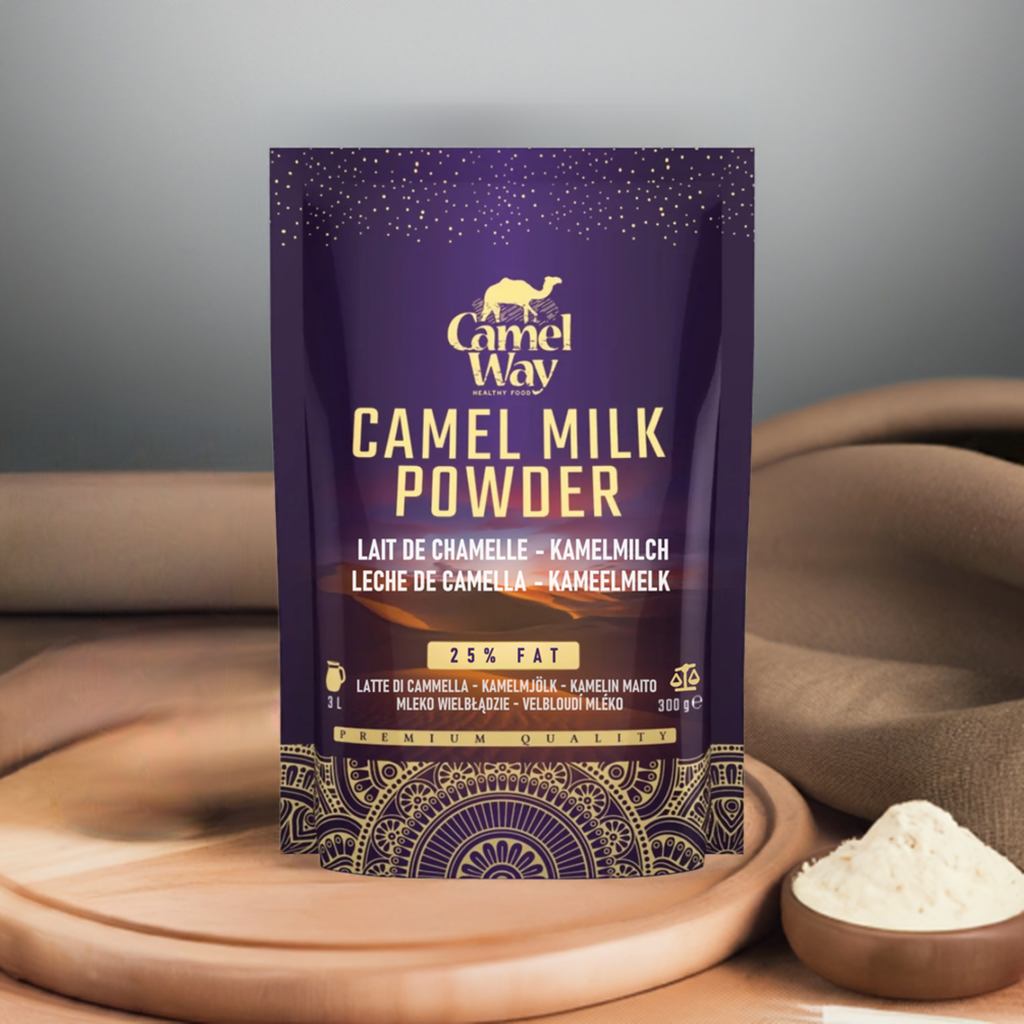
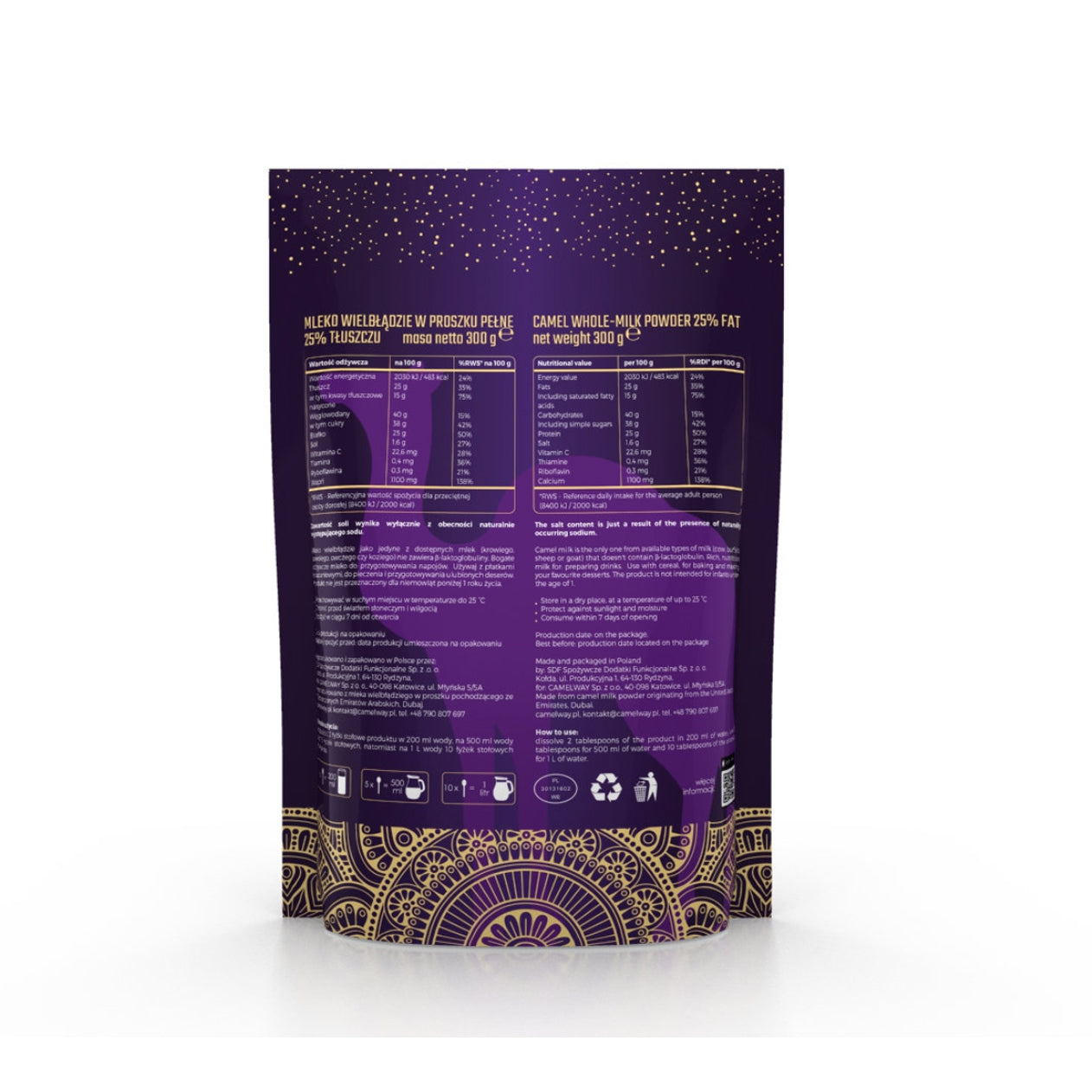
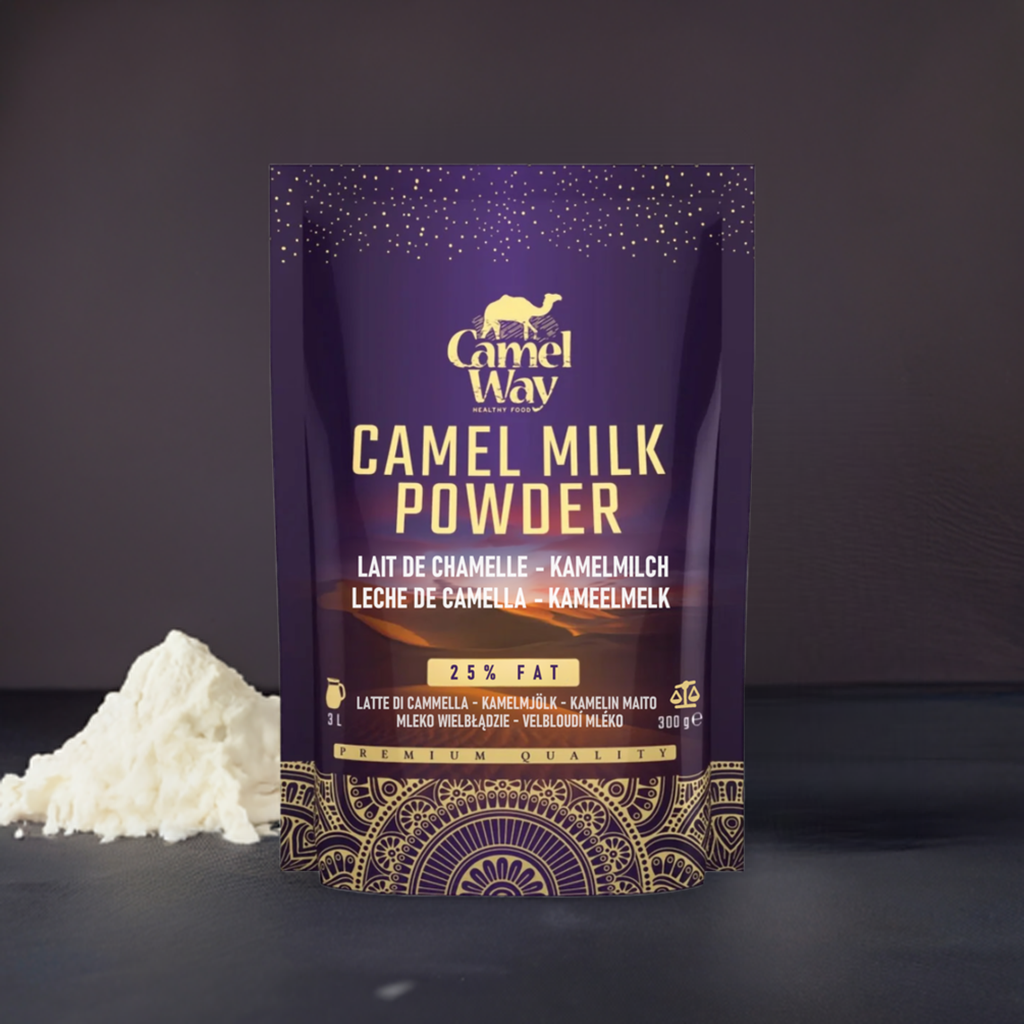
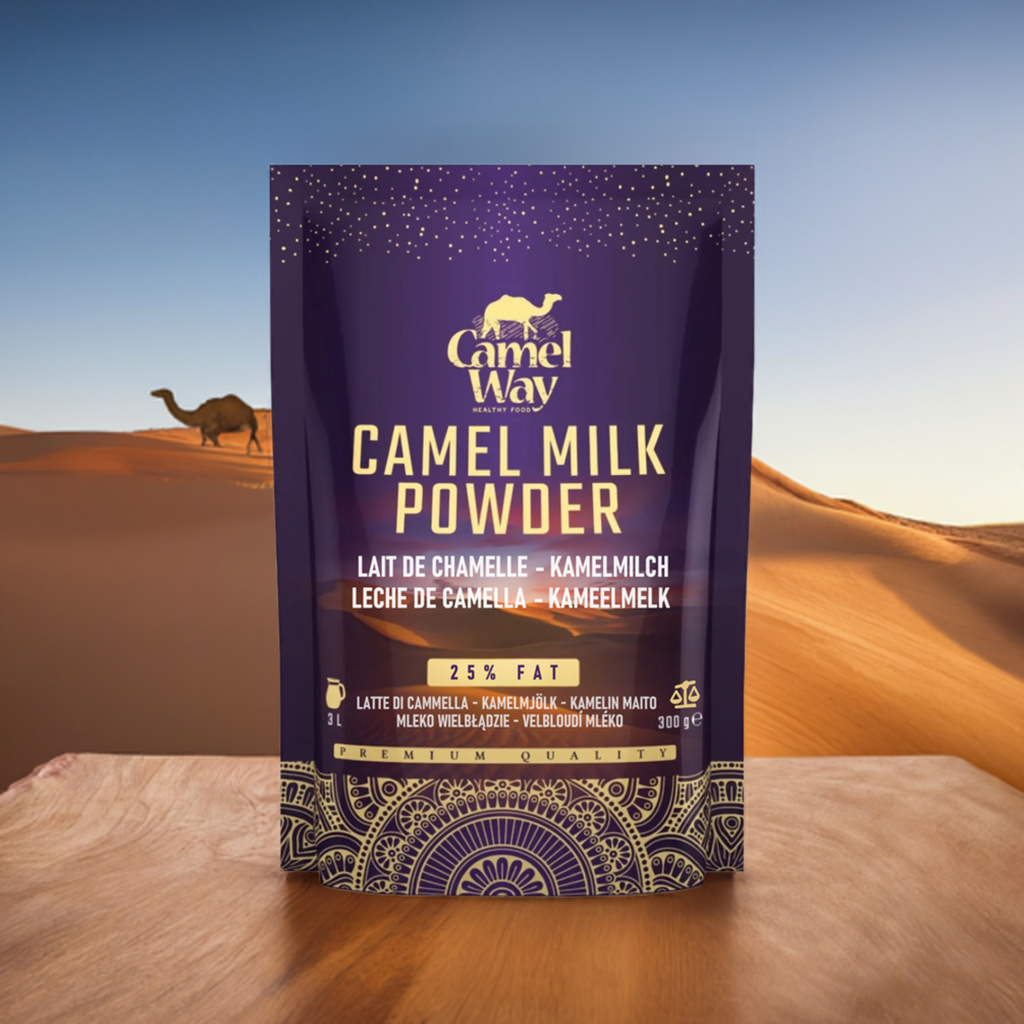
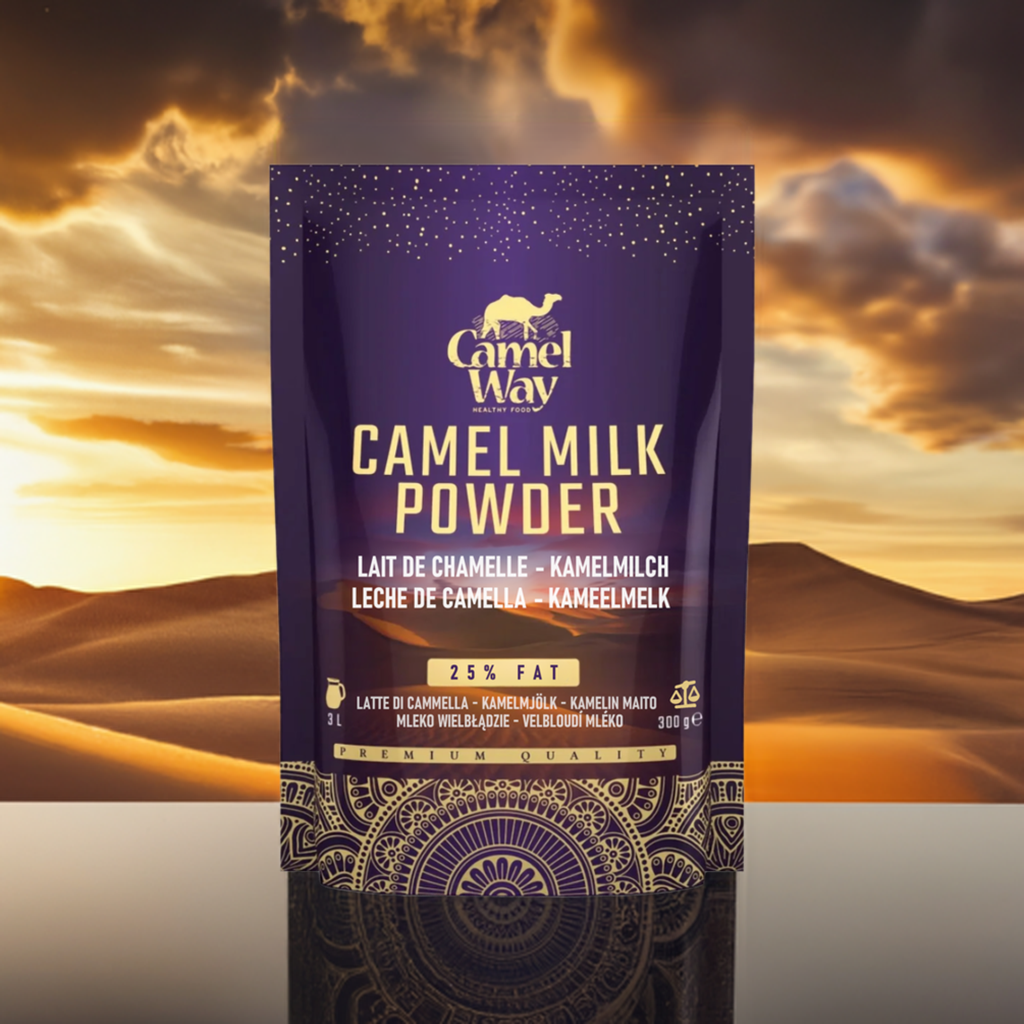

How camel milk may help - proposed mechanisms
- Insulin-like activity: Camel milk contains insulin and insulin-like peptides that may remain bioactive during digestion - potentially contributing to glucose-lowering effects observed clinically. PMC
- Insulin receptor targeting: In vitro and animal work suggests camel-milk proteins and peptides can activate the insulin receptor and potentiate insulin signaling. PMC
- GLP-1 and microbiome: Clinical data show increases in GLP-1 and shifts toward beneficial gut bacteria after camel-milk powder, mechanisms linked to better insulin sensitivity. PMC
- Anti-inflammatory and antioxidant support: Reviews describe lactoferrin, immunoglobulins and antioxidant nutrients that can reduce inflammatory markers and oxidative stress - relevant to both T1D autoimmunity and T2D insulin resistance. PMC

How to use CamelWay camel milk powder
- Daily amount used in studies: Many T1D trials used ~500 ml/day of reconstituted camel milk alongside standard therapy. T2D studies used smaller daily amounts of powder for 4 to 8 weeks, with longer durations supporting lipid benefits. Follow your clinician’s advice and monitor glucose as you introduce it.
- How to prepare: Mix according to the label to make a smooth, fresh glass. Start with one serving daily, then adjust. Pair with breakfast or an evening snack for routine adherence.
- What to expect: Taste is clean and lightly creamy. Most people tolerate it well - camel milk naturally lacks the major bovine whey allergen β-lactoglobulin. If you have milk allergies or lactose intolerance, consult your healthcare professional first. PMC
Recommended picks:
- Camel Milk Powder 300g - for first-time buyers and 2-week trials
- Camel Milk Powder 3×300g - for month-over-month routines and family use
References and our publication
This page draws on peer-reviewed human studies and reviews:
- Type 1 diabetes RCTs: 16-week and 2-year randomized trials on glycemic control and insulin dose. PubMed
- Type 2 diabetes: double-blind RCT using camel-milk powder and systematic reviews/meta-analyses on glycemia and lipids. PubMed
- Mechanisms: insulin-receptor targeting, anti-inflammatory and antioxidant properties. PMC
Our research report with DOI: CamelWay - Camel milk and diabetes, Zenodo DOI 10.5281/zenodo.17184240. Zenodo
CamelWay
Camel Milk Powder 3x300g (Total 900g) | Family Bulk Pack
Share
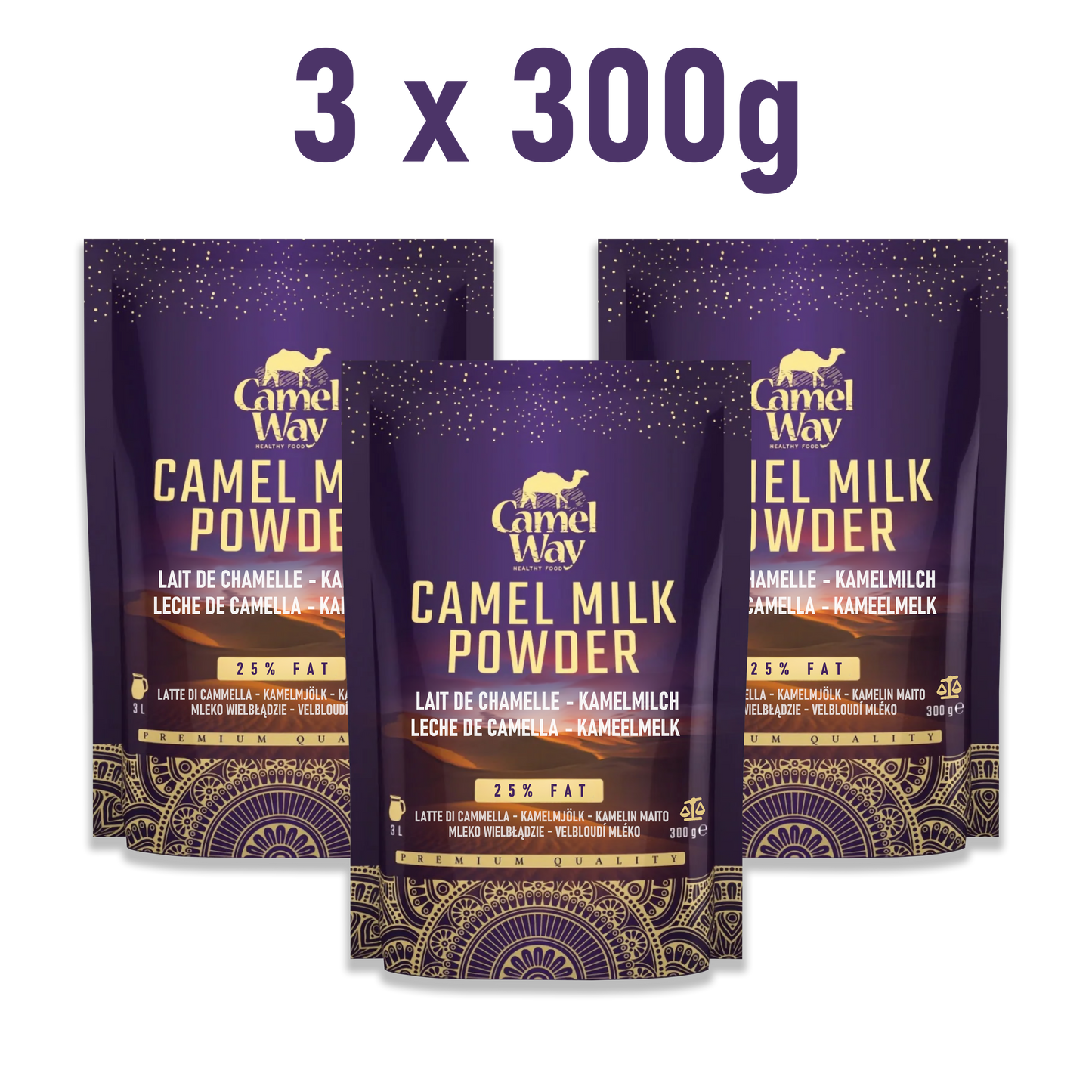
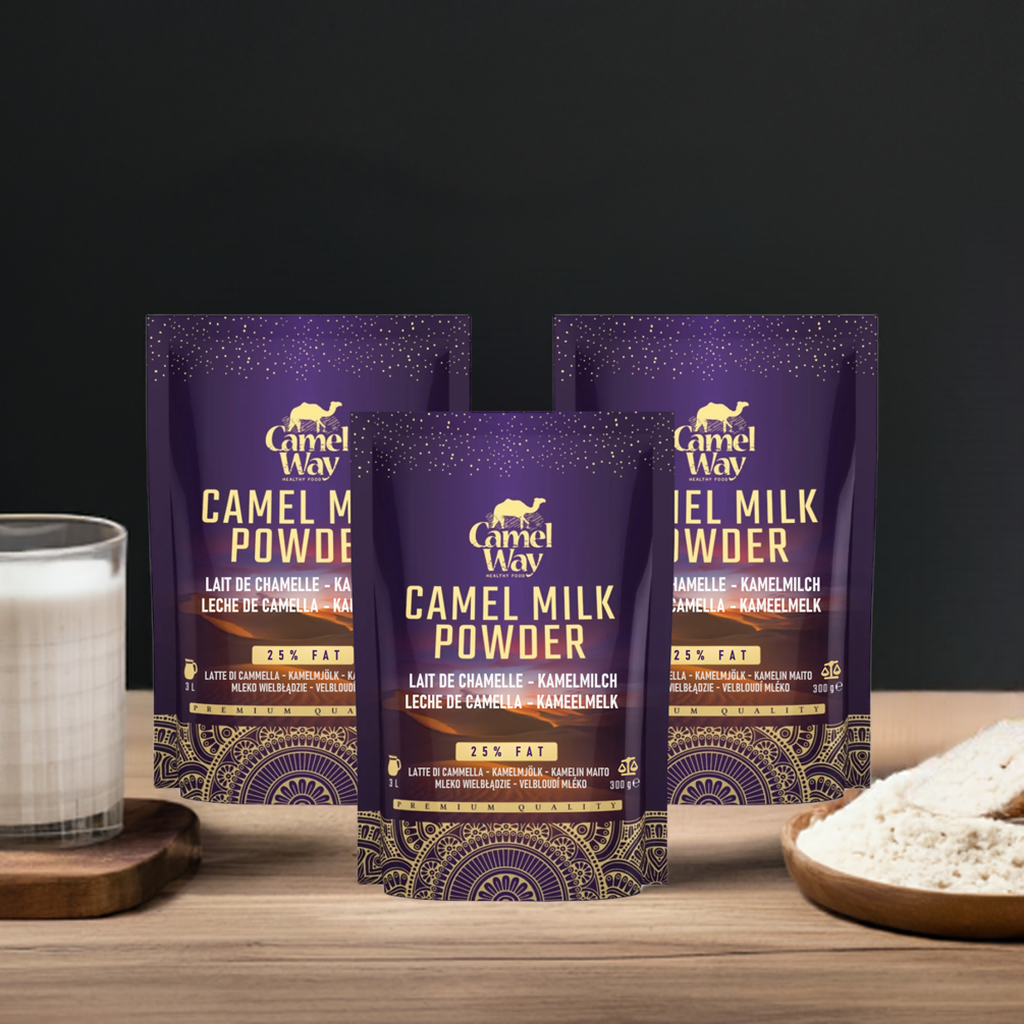
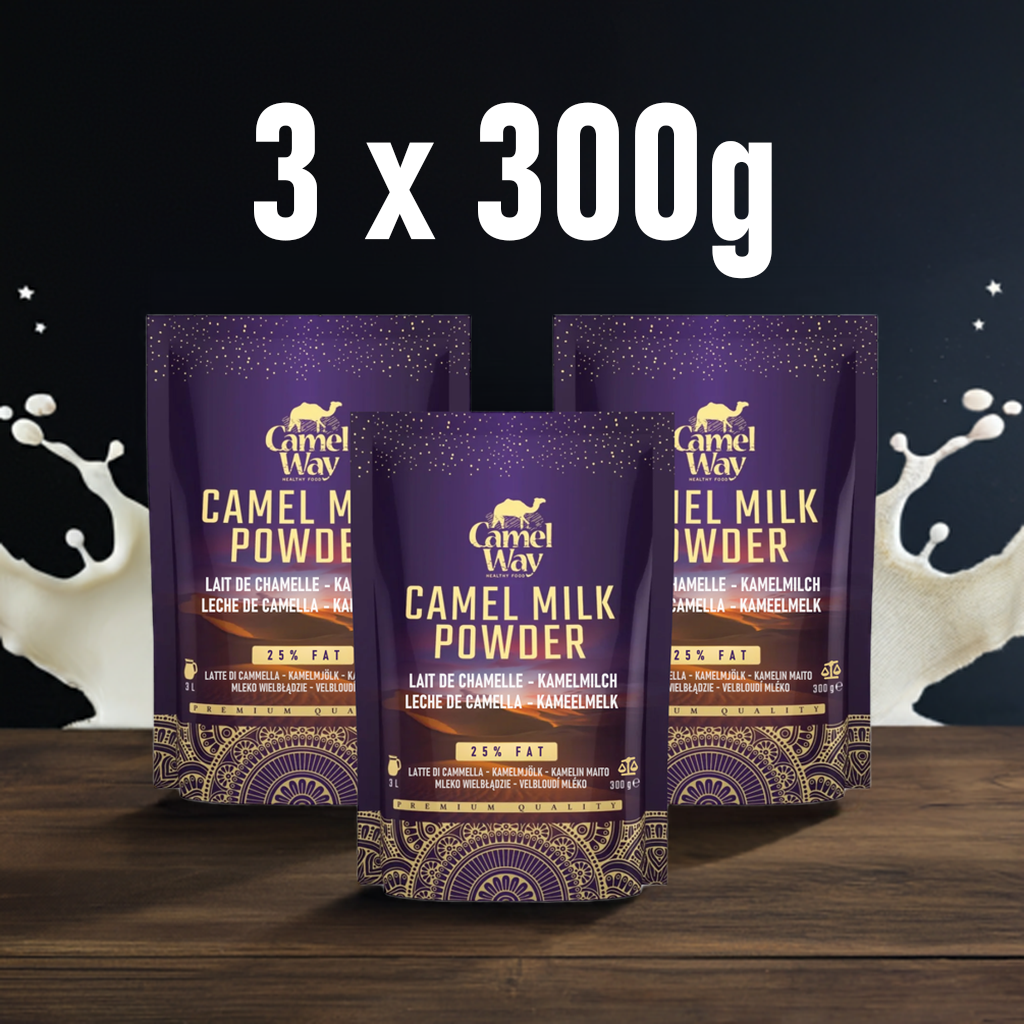
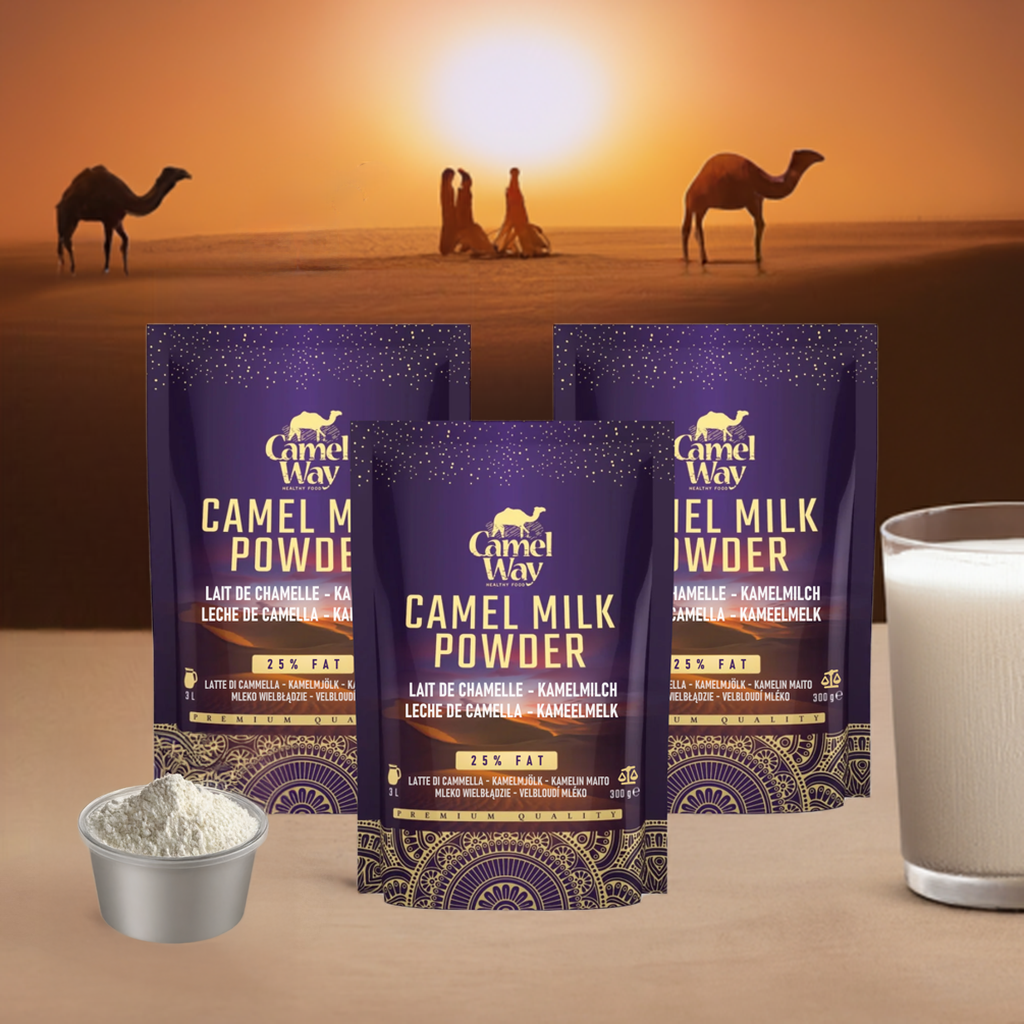

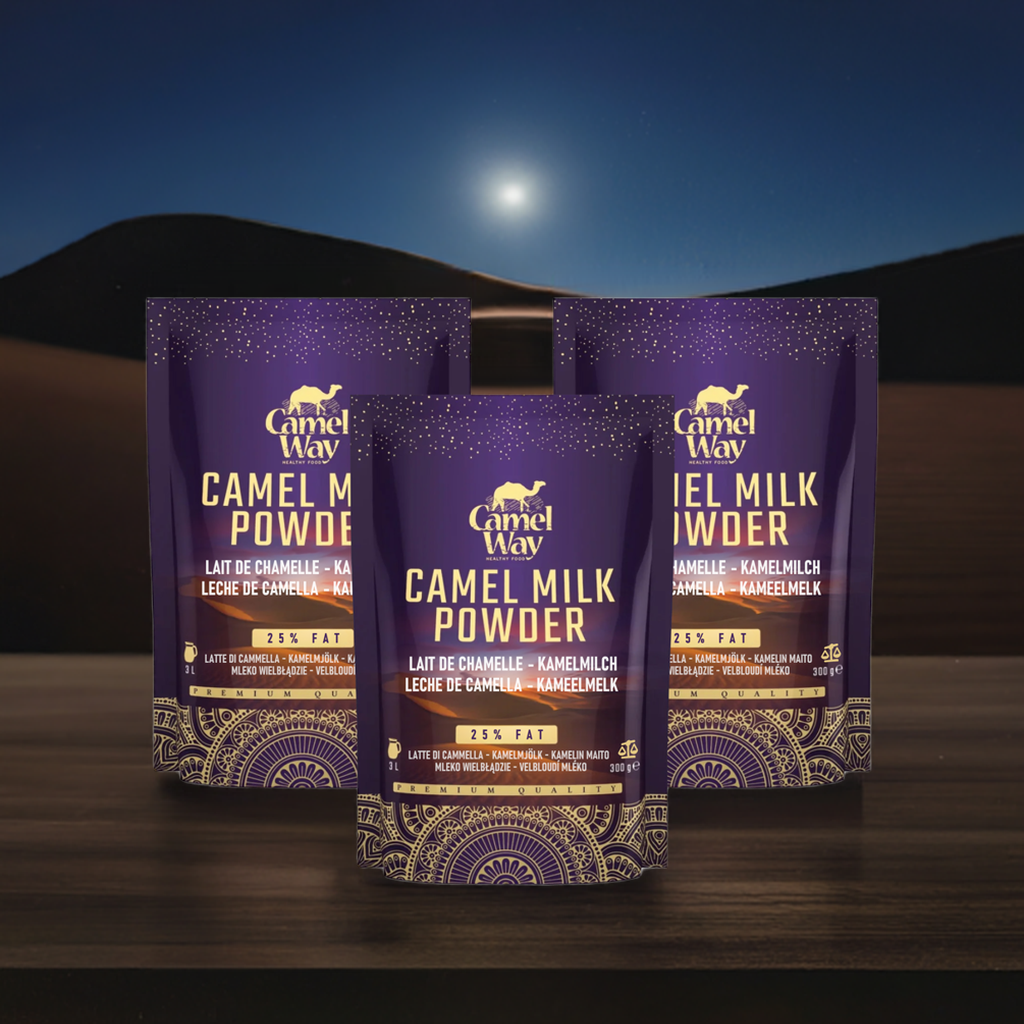
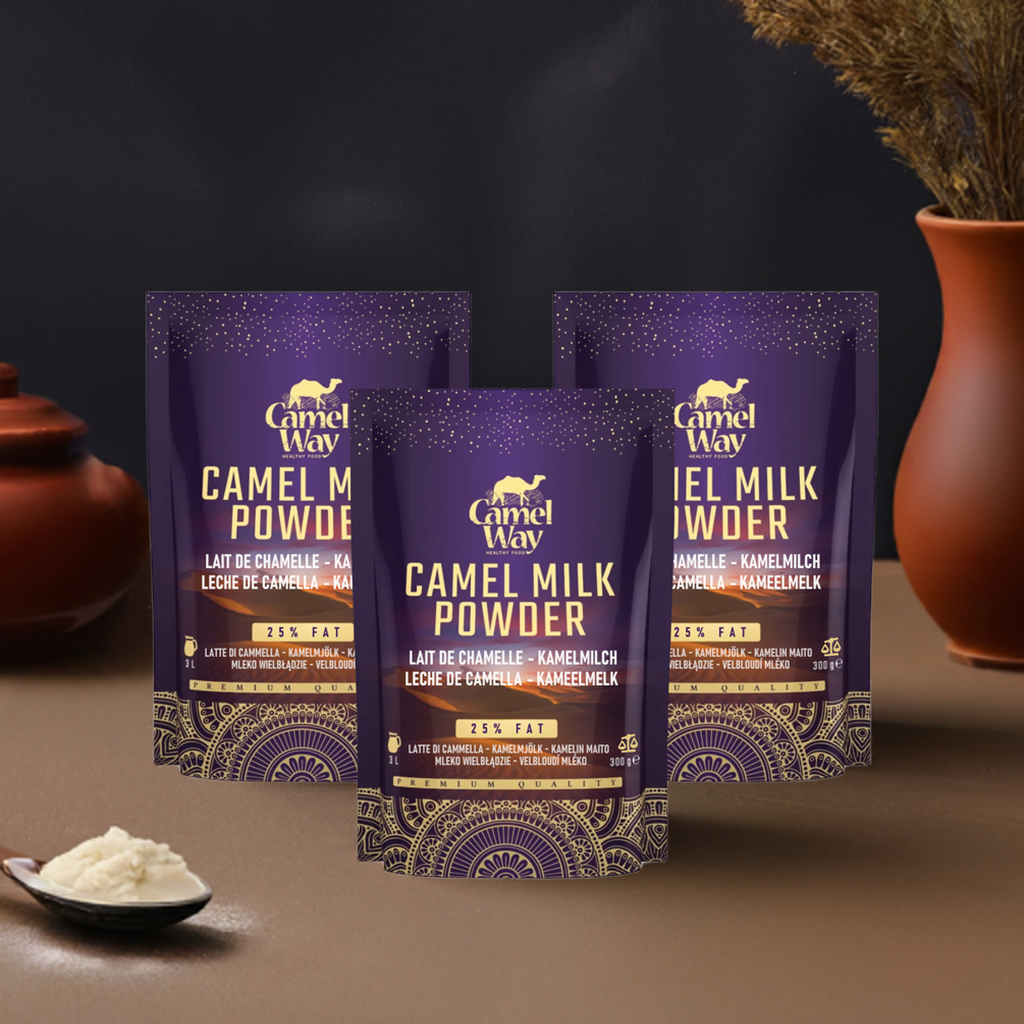

About Camel Milk
View all-

Camel Milk vs Cow Milk: 7 Health Benefits Compared
Considering switching from cow milk to camel milk? Explore this comprehensive comparison of camel milk vs cow milk, highlighting why camel milk is rapidly emerging as the healthiest milk alternative....
Camel Milk vs Cow Milk: 7 Health Benefits Compared
Considering switching from cow milk to camel milk? Explore this comprehensive comparison of camel milk vs cow milk, highlighting why camel milk is rapidly emerging as the healthiest milk alternative....
-

Is Camel Milk the Healthiest Milk? Which One Is...
Why camel milk is the healthiest milk alternative available today? If you’re looking for the perfect milk substitute, discover why camel milk is creating a buzz. Our article dives into...
Is Camel Milk the Healthiest Milk? Which One Is...
Why camel milk is the healthiest milk alternative available today? If you’re looking for the perfect milk substitute, discover why camel milk is creating a buzz. Our article dives into...
-

Where to Buy Camel Milk Near Me?
Wondering where to buy camel milk near you? Read our full article to learn how you can have high-quality, nutrient-rich camel milk delivered directly to your door.
Where to Buy Camel Milk Near Me?
Wondering where to buy camel milk near you? Read our full article to learn how you can have high-quality, nutrient-rich camel milk delivered directly to your door.
-

Is Camel Milk Good for Your Heart?
Discover how camel milk can enhance your heart health by naturally reducing cholesterol, lowering blood pressure, and fighting inflammation. Explore the science behind this powerful alternative to traditional dairy.
Is Camel Milk Good for Your Heart?
Discover how camel milk can enhance your heart health by naturally reducing cholesterol, lowering blood pressure, and fighting inflammation. Explore the science behind this powerful alternative to traditional dairy.

